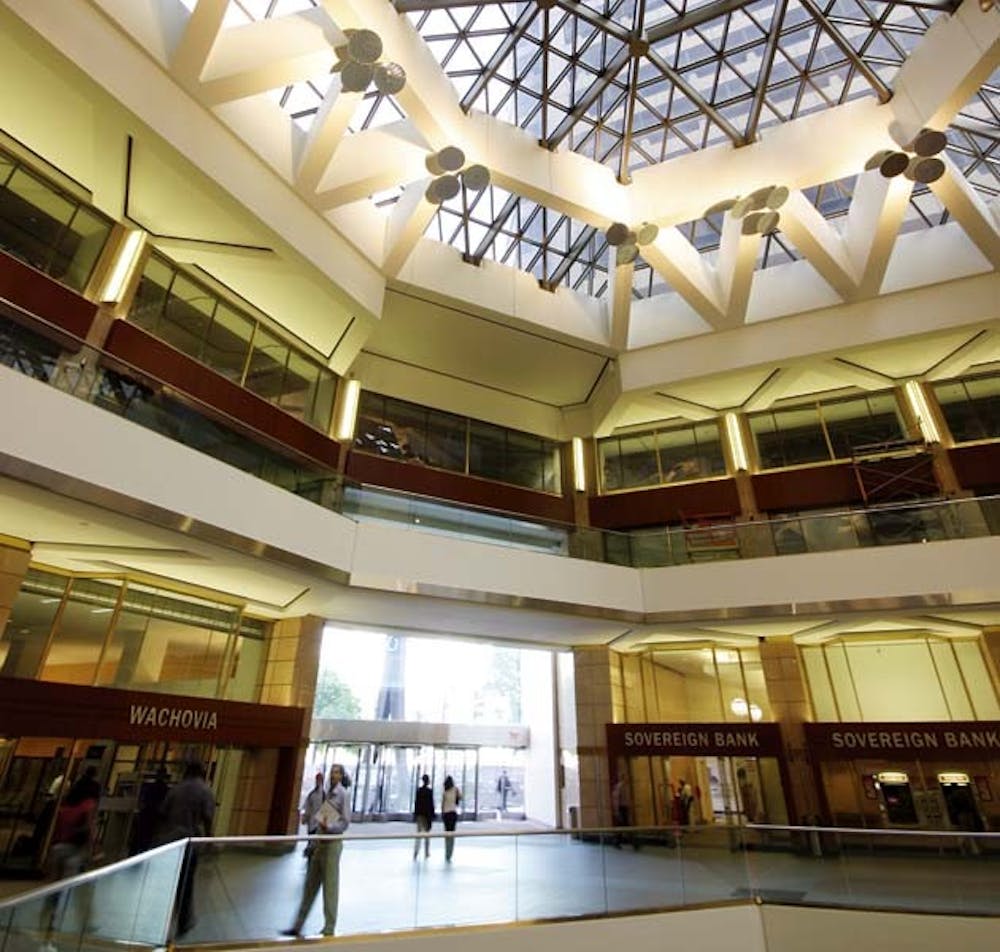In the race to expand eastward, Penn's Health System seems to be beating out the rest of the University.
The Health System recently signed a lease for 263,000 square feet in the Centre Square building, located in Center City at 1500 Market Street.
UPHS plans to move its ancillary services, like finance and communication operations, to the new location to free up more space in West Philadelphia for clinical services, said Susan Phillips, chief of staff for the Medical School dean's office.
"If you can move one person or non-clinical department out of HUP, you can fill that area with beds or other services for patients," she said. "For the amount of space and for the competitive price, Centre Square was definitely the best option."
But UPHS isn't the only hospital making the leap across the Schuylkill.
The Children's Hospital of Philadelphia - which is affiliated but not owned by Penn - has also moved some non-clinical services into Center City, said Earl Marsh, a Penn Health System architect.
And other medical centers in urban areas across the country are moving non-clinical services downtown in order to save money, said Dave Campoli, vice president of HRPT Properties Trust, the company which manages Centre Square.
"The University of Pittsburgh medical center did the same exact thing a while ago," he said. "They took up office space downtown and moved some administrative jobs there, where it was more efficient to house them."
Campoli added that this is part of a larger trend. "Many major medical centers in cities all over are moving into less expensive but highly favorable spaces for the worker in the downtown areas," he said.
In Philadelphia, the move downtown by medical centers stems from escalating rental rates in West Philadelphia, and the relatively lower rates in Center City.
"There's just no more space out there," Campoli said. "What has occurred with the three main groups - Drexel, Penn and the Children's Hospital of Philadelphia - is that there has been a significant amount of expansion. [That has] run up the rental rates in West Philadelphia."
New technology and an older population are also fueling the rapid expansion of Philadelphia's medical centers, which are quickly becoming a dominant industry in the region, Phillips said.
She added that because most non-clinical services utilize computerized systems, medical centers can effectively work and communicate with these departments even if they aren't located near the hospital they serve.
Increasing interaction between Philadelphia's academic regions and its downtown financial district, caused by the expansion of medical centers into Center City, might also have some broader social and economic implications, Campoli said.
"It's a win-win situation," he said. "It will keep rental rates in West Philadelphia from spiking further. You're also benefiting the downtown area because by moving jobs downtown, you're introducing all these workers to shops and commercial businesses there."
Penn's Health System is in the process of deciding which non-clinical services it will move downtown, Phillips said. She added that the move will take place over the next two years.



